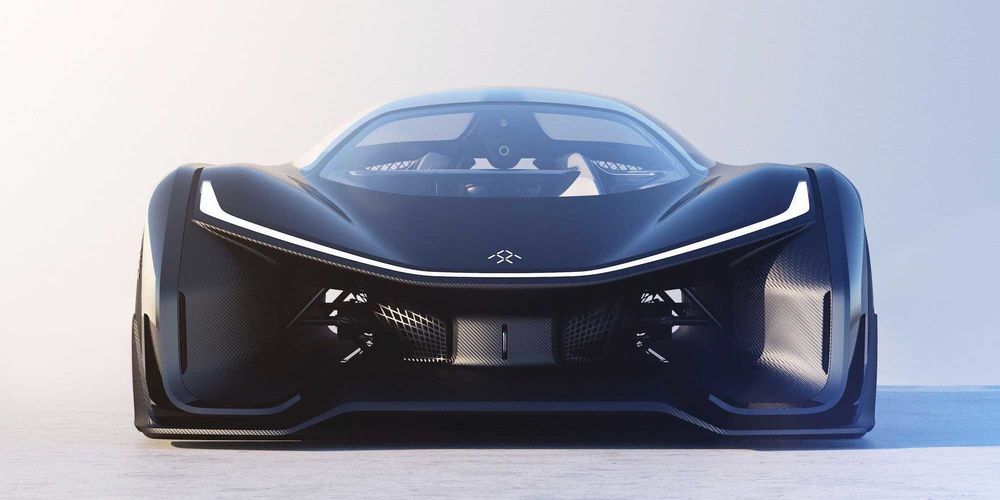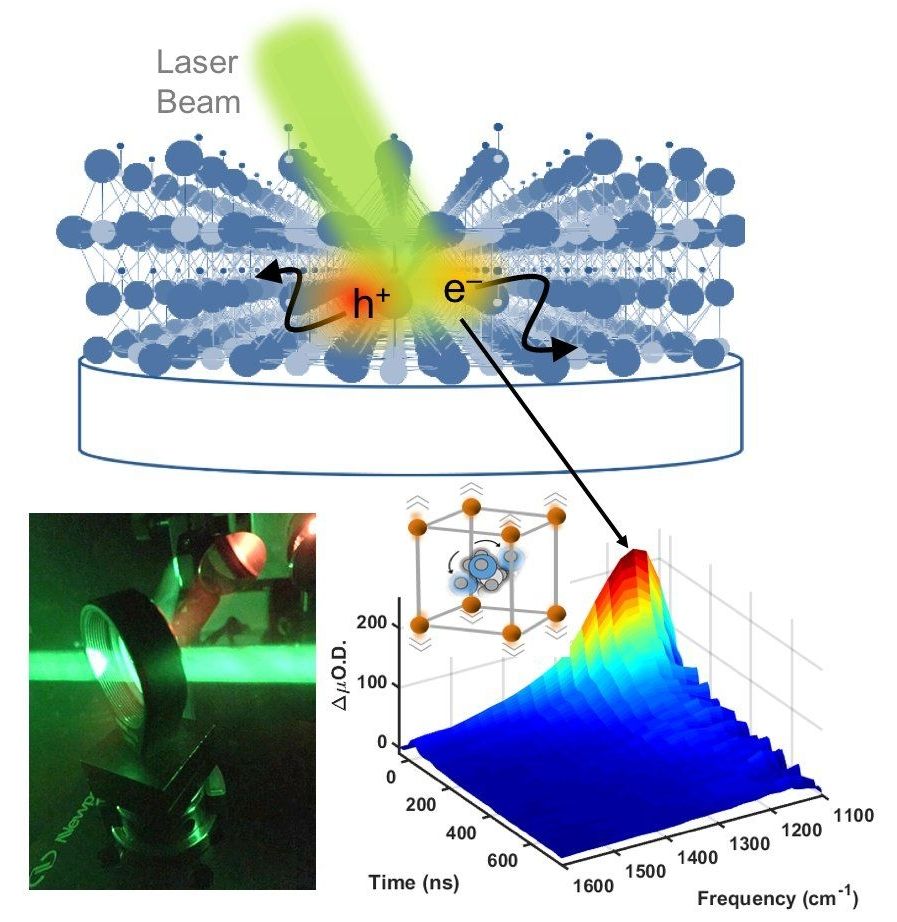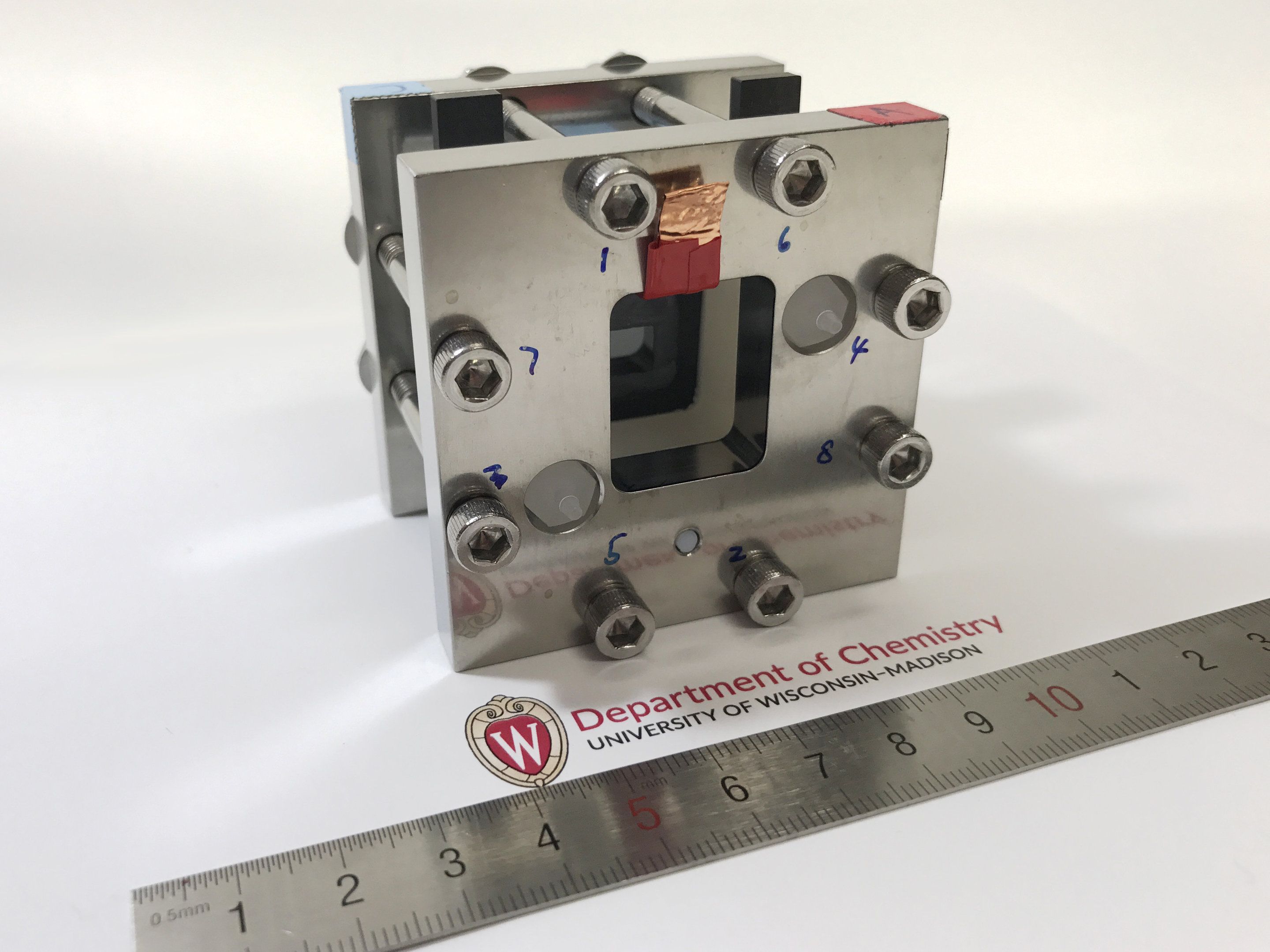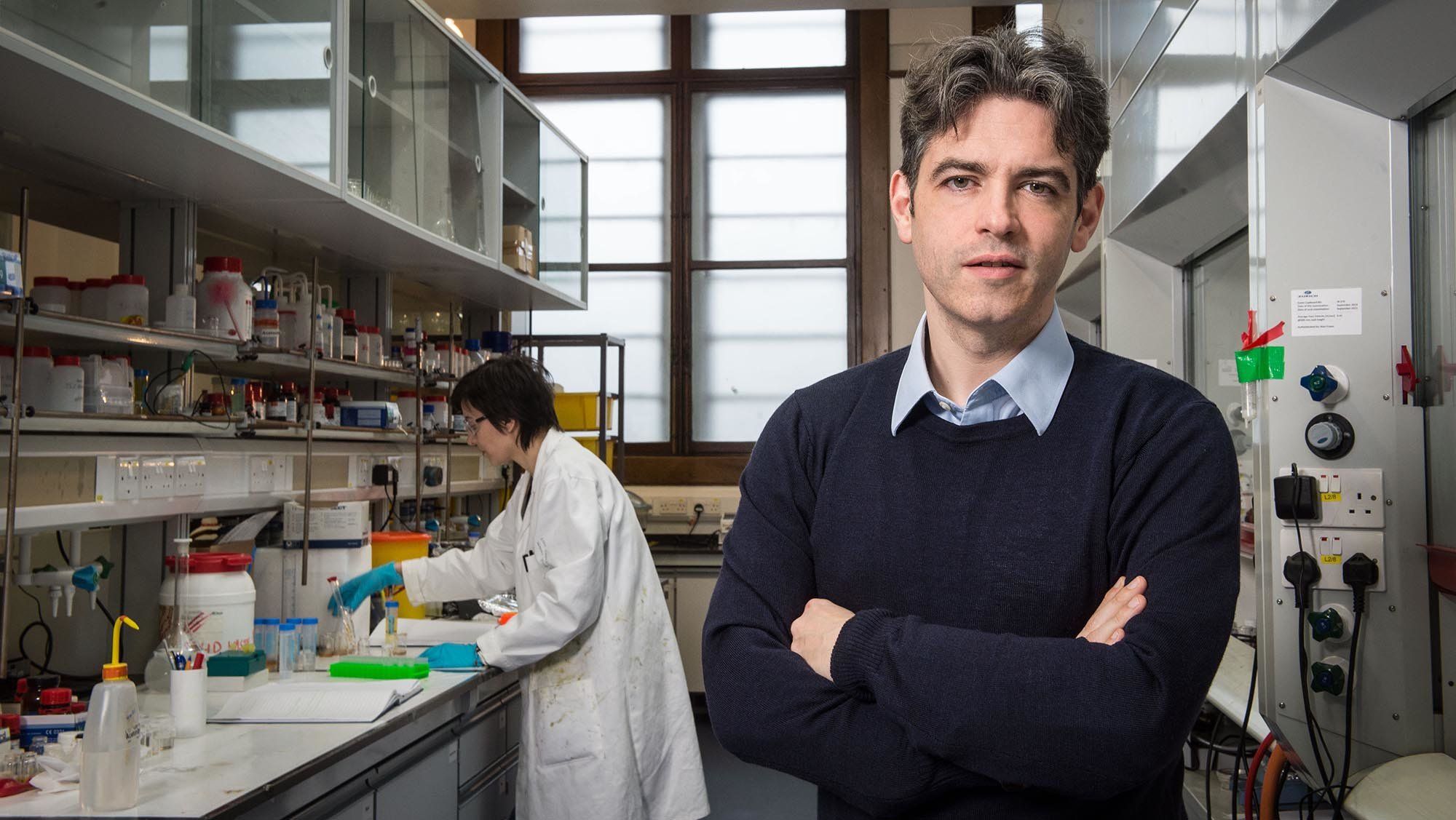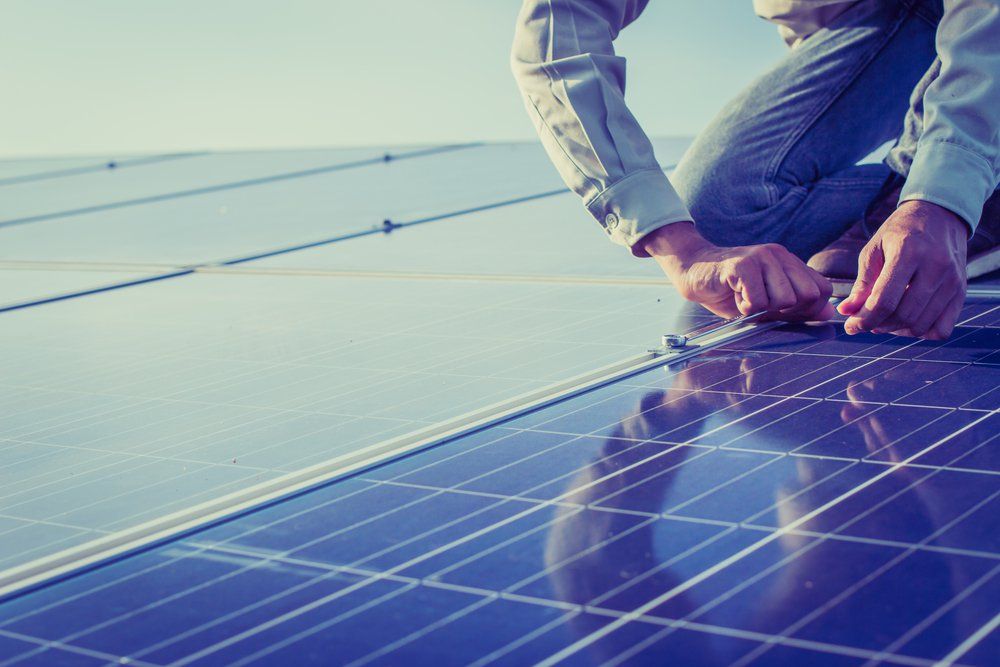Archive for the ‘sustainability’ category: Page 534
Sep 27, 2018
Shake, rattle, and roll to high efficiency photovoltaics
Posted by Bill Kemp in categories: solar power, sustainability
New insight into how a certain class of photovoltaic materials allows efficient conversion of sunlight into electricity could set up these materials to replace traditional silicon solar cells. A study by researchers at Penn State reveals the unique properties of these inexpensive and quick-to-produce halide perovskites, information that will guide the development of next generation solar cells. The study appears September 27 in the journal Chem.
“Since the development of silicon solar cells, which today can be found on rooftops and roadsides, researchers have sought new types of photovoltaic materials that are easier to process into solar cells,” said John Asbury, associate professor of chemistry at Penn State and senior author of the study. “This is because construction of silicon solar cells is complex and hard to scale-up to the level that would be needed for them to generate even 10 percent of our total demand for electricity.”
Because of these complications, researchers have been searching for less expensive alternatives to silicon solar cells that can be processed more quickly. They are particularly interested in materials that can be processed using a technique called roll-to-roll manufacturing, a technique similar to those used to print newspapers that enables low-cost, high-volume production. Such materials must be processed from solution, like ink printed on a page.
Continue reading “Shake, rattle, and roll to high efficiency photovoltaics” »
Sep 27, 2018
Device that integrates solar cell and battery could store electricity outside the grid
Posted by Bill Kemp in categories: solar power, sustainability
Scientists in the United States and Saudi Arabia have harnessed the abilities of both a solar cell and a battery in one device—a “solar flow battery” that soaks up sunlight and efficiently stores it as chemical energy for later on-demand use. Their research, published September 27 in the journal Chem, could make electricity more accessible in remote regions of the world.
While sunlight has increasingly gained appeal as a clean and abundant energy source, it has one obvious limitation—there is only so much sunlight per day, and some days are a lot sunnier than others. In order to keep solar energy practical, this means that after sunlight is converted to electrical energy, it must be stored. Normally this takes two devices—a solar cell and a battery—but the solar flow battery is designed to perform like both.
“Compared with separated solar energy conversion and electrochemical energy storage devices, combining the functions of separated devices into a single, integrated device could be a more efficient, scalable, compact, and cost-effective approach to utilizing solar energy,” says Song Jin, a professor of chemistry at the University of Wisconsin-Madison. Jin and his team developed the device in collaboration with Jr-Hau He, a professor of electrical engineering at King Abdullah University of Science and Technology (KAUST) in Saudi Arabia.
Sep 26, 2018
Scientists have been drilling into the ocean floor for 50 years – here’s what they’ve found so far
Posted by Genevieve Klien in categories: climatology, sustainability

The ocean floor holds unique information about Earth’s history. Scientific ocean drilling, which started 50 years ago, has yielded insights into climate change, geohazards and the key conditions for life.
Sep 25, 2018
Tenfold improvement in liquid batteries mean electric car refuelling could take minutes
Posted by Shailesh Prasad in categories: chemistry, energy, sustainability, transportation
One of the biggest drawbacks of electric vehicles – that they require hours and hours to charge – could be obliterated by new type of liquid battery that is roughly ten times more energy-dense than existing models, according to Professor Lee Cronin, the Regius Chair of Chemistry at the University of Glasgow, UK.
What’s so special about this liquid, or flow, battery?
“A normal electric vehicle has a solid battery, and when that runs out of charge you have to recharge it by plugging it in to a power socket. This takes half an hour or so if you find a rapid charger at a motorway service station, or up to 12 hours at home. Our battery, however, is made of a liquid rather than a solid. If you run out of charge, you could in principle pump out the depleted liquid and – like a regular petrol or diesel vehicle – refill it with liquid that is ready-charged. And that would take minutes.”
Sep 24, 2018
Screen-printed, large-area nPERT solar cells surpass 23 percent efficiency
Posted by Bill Kemp in categories: solar power, sustainability
At today’s EU PVSEC conference, imec—the world-leading research and innovation hub in nanoelectronics, energy and digital technology and partner in EnergyVille—announced that its latest generation of large-area monofacial screen-printed rear-emitter nPERT cells feature a conversion efficiency of 23.03 percent, certified by Fraunhofer ISE CalLab. The nPERT (n-type Passivated Emitter and Rear Totally diffused) solar cells are made using an industry-compatible screen-printing process that has been designed as an upgrade of conventional pPERC (p-type Passivated Emitter and Rear Cell) processes. According to imec, its nPERT technology is projected to reach 23.5 percent efficiency by the end of this year, and there is a clear technology roadmap to eventually surpass 24 percent.
While p-type PERC solar cells are becoming mainstream in the PV industry, n-type PERT technology is being developed as a cost-effective contender that has a number of inherent advantages: Due to the absence of B-O complexes, n-type cells don’t suffer from light induced degradation (LID) and are less sensitive to metal impurities. That makes for cells that have the potential for a longer-term stability and a higher efficiency. Imec fabricated the M2-sized cells (area: 244.3 cm²) on its pilot line with industry-compatible tools and recipes, in a process that is an upgrade of the pPERC fabrication process, using a similar layout of an n+ region (Front Surface Field) on the illuminated side and a p+ region (as rear emitter) on the opposite side and adding a cost-effective boron diffusion.
“Until now, nPERT solar technology has not yet found the traction it deserves in the industry,” says Loic Tous, senior researcher at imec. “With these ever-improving results, which we achieved by applying knowledge gained from our bifacial nPERT project, we are now demonstrating the potential of nPERT technology. The advantages in stability and efficiency potential over p-type PERC cells, while using the same equipment with the addition of a Boron diffusion, make this a very promising technology for future manufacturing lines.”
Continue reading “Screen-printed, large-area nPERT solar cells surpass 23 percent efficiency” »
Sep 24, 2018
This Off-Grid, Solar-Powered System Sends Crypto Through Radio Waves
Posted by Genevieve Klien in category: sustainability
Developer Daniel Jones has developed an off-grid, solar-powered system that uses radio waves to send crypto payments from areas with poor infrasructure.
Sep 20, 2018
The Four Best Investments We Can Make in the Global War on Poverty
Posted by Derick Lee in categories: biotech/medical, education, health, sustainability
All three of these surprising achievements are highlighted in the Goalkeepers 2018 Data Report, written by Bill and Melinda Gates and released on Sept. 18. But the dispatch—an assessment of the progress made so far on the United Nations’ 17 Sustainable Development Goals and done with the help of the University of Washington’s Institute for Health Metrics and Evaluation—is anything but rah-rah. For every encouraging data point, indeed, there is one that alarms. For every promising advance in the global war on poverty and disease is a perilous outcome if we lose focus or steam.
A report from the Bill & Melinda Gates Foundation focuses on four key areas: Health, education, sanitation, and family planning.
Sep 18, 2018
Can NMN Increase Longevity?
Posted by Steve Hill in categories: life extension, sustainability

Today, we are delighted to announce that we have launched a new crowdfunding campaign on Lifespan.io: the NAD+ Mouse Project by Dr. David Sinclair and his team at Harvard Medical School.
The first long-term lifespan study in mice involving supplementation with NMN, a precursor of NAD+ metabolism, which has been shown to reduce aging markers and increase sirtuin activity. We propose to conduct a longevity study using NMN in the drinking water of wild-type mice. We also propose to test NMN on a novel model of accelerated aging mice known as ICE mice (Induced Changes In Epigenome).
Sep 18, 2018
Volvo unveils all-electric and autonomous truck without a cab
Posted by Shailesh Prasad in categories: robotics/AI, sustainability, transportation
If your truck is completely autonomous, why would you need a cab? Volvo Trucks believes that you don’t and that’s why they built a new all-electric and autonomous truck without a cab called Vera.
Claes Nilsson, President of Volvo Trucks, the idea behind Vera:
“The full potential of the transport industry is yet to be seen. Everything suggests that the global need for transportation will continue to significantly increase in the coming decade. If we are to meet this demand in a sustainable and efficient way, we must find new solutions. In order to secure a smoothly functioning goods flow system we also need to exploit existing infrastructure better than currently. The transport system we are developing can be an important complement to today’s solutions and can help meet many of the challenges faced by society, transport companies and transport buyers,”
Continue reading “Volvo unveils all-electric and autonomous truck without a cab” »
